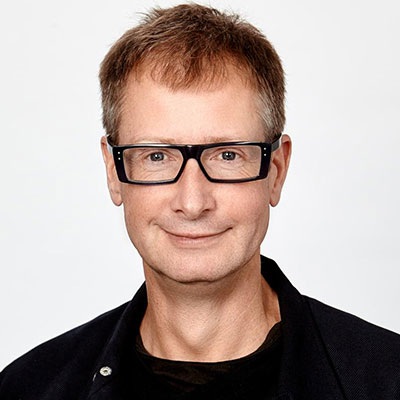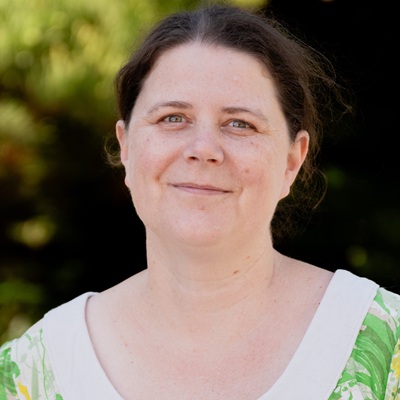MATS brings assistive tech to life through collaboration
The Monash Assistive Technology and Society Centre (MATS) is promoting cross-faculty collaboration on projects that will make life easier for people with disability.

MATS was officially launched in December in 2024, but it was around two decades in the making, according to Centre head Professor Kim Marriott, building on the work of many staff. “A group of us within the faculty [of Information Technology] had been working on assistive technologies, but we realised in 2021 that there were other people across the university in other faculties who were also working with disability and technology,” he said. “We ran a series of workshops and there was a lot of interest, and we discovered a whole lot of people from across Monash working in this space. We prepared a proposal [to establish a centre]… and then in 2024, we had our official launch.”

Leona Holloway is a research fellow at MATS and its community impact lead. She said the new collaborative approach has helped researchers at the university. “It’s a lot more effective to work collaboratively. We can work on larger projects, we’ve got cross-faculty, cross-discipline knowledge that we can share. There are so many advantages in creating the centre.”
The Centre is now at almost 120 members drawn from across Monash’s medicine, nursing and health sciences, education, engineering and arts faculties, and the Monash Business School, including educators, researchers, PhD and Masters students. Many MATS staff have lived experience of disability. MATS works closely with a number of partner organisations in the community, who will ask for support on particular projects or provide advice on something the Centre wants to work on.
Grounded in impact
The work that MATS does isn’t exclusively for Monash students and staff; it’s for people with disability everywhere, Marriott said. The centre is built on three pillars.
First, its work is based in real-world community impact. “We work closely with disability organisations. We’re driven by real-world needs, and we do that both through research and education,” Marriott said.
The second pillar is that it aspires to produce excellent research with a holistic lens on assistive technology. The third is to provide rich, inclusive education to Monash students while ensuring they graduate with an appreciation for and understanding of inclusive design. The Centre also advises governments on these issues and takes an active stance on the need for systemic change across the university sector to make it more accessible Australia-wide.
Through its work, the Centre also aims to get more students with disability into universities, especially into STEM subjects. It’s currently looking at setting up a national peer support network next year for students with disability who are studying computing.
Monash students are given the chance to undertake paid work with MATS on accessibility issues, like auditing the university’s software systems. MATS also runs a maker van that travels to specialist schools to teach STEM to people with intellectual and cognitive disability.

Marriott said he and Holloway said an upcoming project will explore mathematics accessibility using refreshable tactile displays. The Centre has recently received a grant for this research, which Marriott aid would be “a gamechanger for people who are blind or low vision because for the first time, they’d have something that’s the equivalent of a computer monitor.”
“We’re working with education departments to see how they can be used in schools to teach mathematics in upper secondary school.” This would feed into the Centre’s aim to encourage more students with disability to study STEM. It will also consider how AI conversation agents could link in with these refreshable displays to explain concepts.
Marriott said it’s vital to get more students with disability into STEM subjects and counter the high unemployment rate in that community. “In STEM generally, there’s an underrepresentation of people with disabilities, and that impacts on the sort of products that are being developed and who they’ve been developed for. It’s really important to have everybody represented and to be part of the industry to ensure that products are designed more broadly, and with an understanding of accessibility,” he explained.
“It’s also about being able to have the confidence and ability to produce your own accessibility hacks – people with disabilities often have very individualised needs, and once you put these easy tech solutions into their hands, they are coming up with their own devices that will have an impact on their everyday lives.”
Leading change
Though it has only been officially open for a year, MATS is already making a difference.
One of Holloway’s projects – a world first, and the subject of her prize-winning PhD dissertation – is the creation of 3D printed models as education aids for those who are blind or have low vision. MATS formed a community of practice with other partners, aiming to revolutionise education by using intuitive, easy-to-read models rather than old-fashioned raised line drawings. The project also produced guidelines on information access which have been shared worldwide.
“Australia now leads the world in adoption of 3D printing within primary and secondary schools across Australia, and students who are blind or have low vision now have access to 3D models which is something they didn’t have before the project started,” Holloway said.
As well as this, MATS runs a series of monthly seminars for staff and community partners to hear from experts on accessibility and inclusion issues. The Centre also provides seed grants faculties to support multidisciplinary collaboration and build relationships between researchers to enable larger, more impactful projects.

Looking ahead to its second year, staff are looking at a future project using smart glasses to simplify and explain the visual environment for those with vision challenges. MATS researchers have already worked with community partners to design some prototypes. Marriott said people with disability are often early adopters of new technology that can make their lives easier. “If the technology companies realise that and listen to those people… it’s going to be fantastic for the disability community,” he said.
Marriott and Holloway are excited for the future of assistive technology research – but they want to see more of it in Australia, especially in the realm of digital assistive technology. They also hope other universities will follow Monash’s lead in ensuring all students learn about disability and universal design.
MATS is a founding member of the Australian Disability Research Alliance, alongside Griffith University and a number of other partners. The alliance supports university research driven by lived-experience. “We’re really collaborative, so we’d love to work with other universities that are interested in these areas,” Holloway said.
Written by: Danielle Kutchel
(August 2025)

